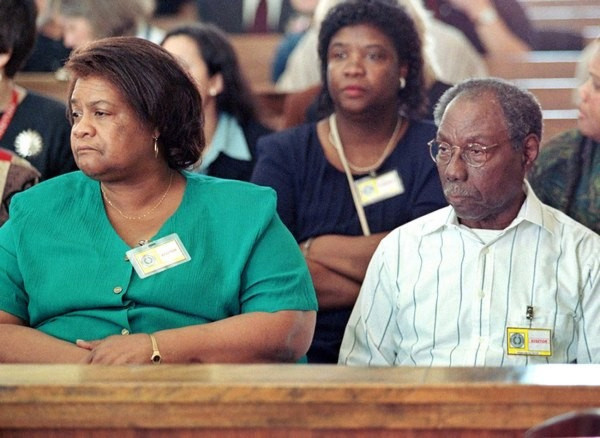Lower hate crime numbers don't tell whole story

Hate crimes in the United States decreased by over 15 percent from 2008 to 2009, according to the annual Hate Crimes Statistics, released today by the Federal Bureau of Investigation.
The 6,604 criminal incidents involved 7,789 reported offenses that were a result of bias toward a particular race, religion, sexual orientation, ethnicity or national origin, or physical or mental disability, the FBI said.
Of the crimes reported, 48.5 percent were racially motivated, 19.7 percent showed a religious bias, 18.5 percent were directed against gay and transgender people, and 11.8 percent were based on ethnicity or national origin. Bias against a disability accounted for 1.5 percent of reported hate crimes.
Most of the hate crimes victims, 2,900, were black. Most of the 6,225 known offenders, 3,884, or 62.4 percent, were white. 18.5 percent of offenders were black.
Of the 5,136 offenders who carried out crimes against persons, 40.3 percent committed simple assaults, 34.6 percent intimidated their victims, and 23.5 percent committed aggravated assaults. Murders and rapes were committed by 1.2 percent of the offenders, the report said.
The largest percentage of hate crime incidents - 31.3 percent -- occurred in or near homes, while 17.2 percent took place on highways, roads, alleys or streets, 11.4 percent happened at schools or colleges, 6.1 percent in parking lots or garages and 4.3 percent in churches, synagogues or temples.
The remaining 29.7 percent of hate crime incidents took place at other specified locations, multiple locations, or locations unknown, according to the FBI.
Marshal Wong of the Los Angeles County Commission on Human Relations is responsible for writing that agency's annual hate crimes report, which is due out next month. He said that the commission's latest report also indicated a drop in reported incidents in Los Angeles County.
What is troubling is that the same trends continue, Wong said. African-Americans are consistently the most-targeted hate crime victims, being victimized at five to six times their proportion of the population.
Anti-gay hate crimes continued to be the most violent, and anti-religious hate crimes are, year after year, most often attacks against Jews, Wong said.
Some of the anti-black crimes we are seeing are done by gangs, trying to drive blacks from the neighborhood, Wong said.
Wong said a huge factor regarding hate crimes reports is that no one knows how many hate crimes go unreported.
Racial fights in jails and juvenile camps, for example, seldom get reported as hate crimes, he said. Gang-related crimes are often treated only as gang crimes, although they are often also hate crimes.
Some law enforcement agencies are reluctant to report hate crimes because of the stigma, Wong said.
Wong said that the Department of Justice, which oversees the FBI, conducted a survey a few years ago to try to get a handle on how many hate crimes may go unreported.
They asked, 'Have you ever been the victim of a hate crime?' 'Did you report the hate crime?' and 'Did the police record it as a hate crime?' Based on that survey, the Department of Justice concluded that 24 to 28 times more hate crimes are committed than the number published in the FBI report, Wong said.
© Copyright IBTimes 2024. All rights reserved.





















